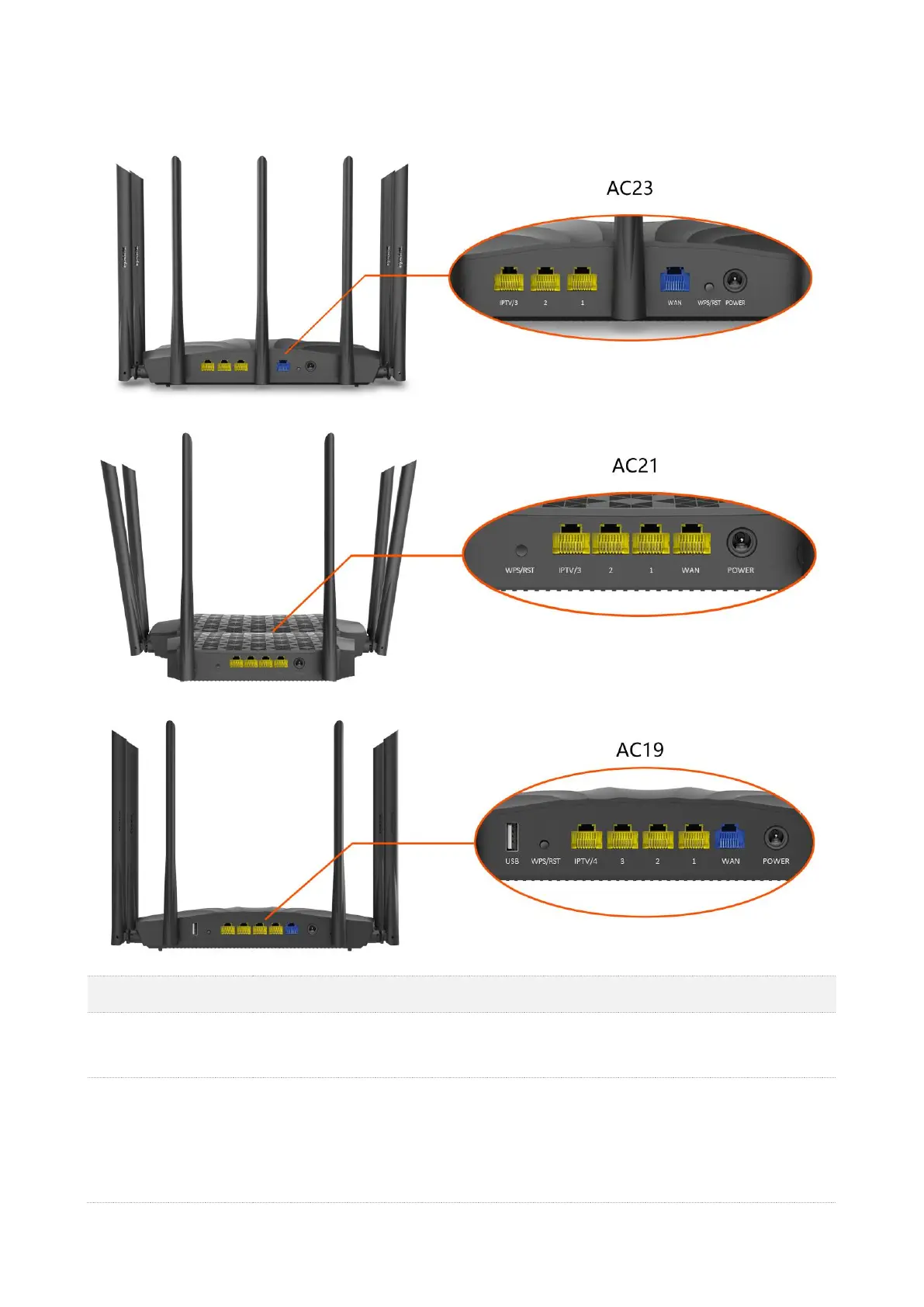

Do you have a question about the Tenda AC23 and is the answer not in the manual?
| USB port | No |
|---|---|
| DC-in jack | Yes |
| Connectivity technology | Wireless |
| Ethernet LAN (RJ-45) ports | 3 |
| Product type | Tabletop router |
| Product color | Black |
| LED indicators | LAN, System, WAN, WLAN, WPS |
| Wi-Fi band | Dual-band (2.4 GHz / 5 GHz) |
| Wi-Fi standards | 802.11a, 802.11b, 802.11g, Wi-Fi 4 (802.11n), Wi-Fi 5 (802.11ac) |
| Top Wi-Fi standard | Wi-Fi 5 (802.11ac) |
| WLAN data transfer rate (max) | 2033 Mbit/s |
| WLAN data transfer rate (first band) | 300 Mbit/s |
| WLAN data transfer rate (second band) | 1733 Mbit/s |
| VPN support | IPsec, L2TP, PPTP |
| Networking standards | IEEE 802.11a, IEEE 802.11ac, IEEE 802.11b, IEEE 802.11g, IEEE 802.11n, IEEE 802.3, IEEE 802.3ab, IEEE 802.3u |
| Ethernet LAN data rates | 10, 100, 1000 Mbit/s |
| Ethernet LAN interface type | Gigabit Ethernet |
| Transmit power | 20/23 dBmW |
| Antennas quantity | 7 |
| Antenna gain level (max) | 6 dBi |
| Output current | 1.5 A |
| Output voltage | 12 V |
| AC input voltage | 100 - 240 V |
| Power source type | AC |
| AC input frequency | 50 - 60 Hz |
| Certification | CE/FCC/RoHS |
| Processor cores | 2 |
| Processor frequency | 1000 MHz |
| Cables included | LAN (RJ-45) |
| Storage temperature (T-T) | -40 - 70 °C |
| Operating temperature (T-T) | 0 - 40 °C |
| Storage relative humidity (H-H) | 5 - 90 % |
| Operating relative humidity (H-H) | 10 - 90 % |
| Security algorithms | WPA, WPA-PSK, WPA2, WPA2-PSK |
| Harmonized System (HS) code | 85176990 |
| Depth | 144.3 mm |
|---|---|
| Width | 238.9 mm |
| Height | 40.3 mm |
How to view the current internet connection status of the router.
Configure PPPoE connection using ISP username and password for internet access.
Setup internet connection using dynamic IP address provided by ISP.
Configure WiFi network name (SSID) and password for secure wireless access.
Set access schedules and website limits for specific devices.
Configure the router as a PPTP server to allow secure remote access to the LAN.
Configure IPv6 connection to the ISP using DHCPv6, PPPoEv6, or static IP.
Limit upload and download speeds for devices connected to the router.
Control internet access by creating MAC address blacklists or whitelists.
Make internal servers or services accessible from the internet by forwarding ports.